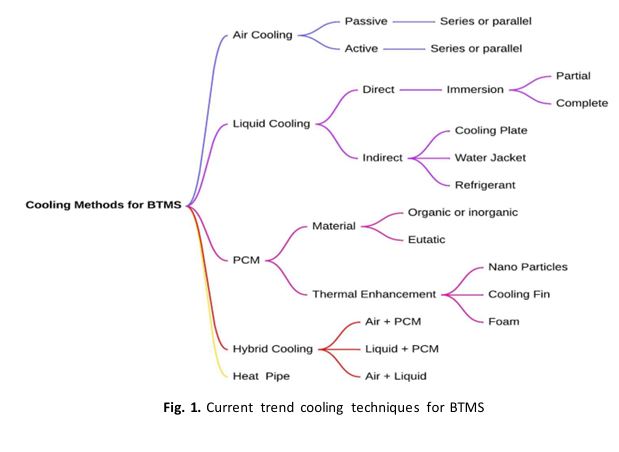A Comprehensive Systematic Review of the Cooling Technique for Battery Thermal Management Systems in Electric Vehicles
DOI:
https://doi.org/10.37934/javs.16.1.2349Keywords:
Electric vehicle battery thermal management system, cooling method, phase change materialAbstract
As electric vehicles (EV) become more and more popular, effective battery thermal management systems (BTMS) are essential for maintaining battery longevity, improving performance, and ensuring safety. Battery action generates much heat, which makes this process difficult. Heat management is needed to reduce the negative effects of high heat. Many cooling methods, including liquid cooling, air cooling, and phase change materials (PCM), have been thoroughly studied. Recent studies on BTMS cooling methods for cars are reviewed in this paper. A comprehensive analysis of research published between 2022 and 2024 was conducted using a structured methodology. These include databases such as Scopus and Web of Science (WoS). The review examines various cooling methods and emphasizes important factors such as energy saving, temperature uniformity and maximum temperature drop. Numerical findings show that hybrid systems, especially those combining liquid cooling and PCM, show exceptional thermal performance. This system improves temperature uniformity and stability, which is essential for optimal battery performance. When forced air cooling is combined with liquid cooling and PCM, cooling efficiency and energy consumption increase significantly. The results show that using a hybrid cooling system is the most effective BTMS method for electric vehicles. Future research should focus on additional optimization and practical testing to evaluate this advanced cooling system under various operating situations. This comprehensive evaluation facilitates the development of a more durable and effective BTMS, which enables the development of safer and more reliable electric cars.














